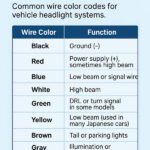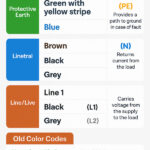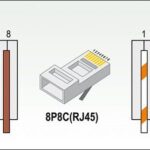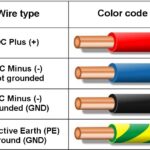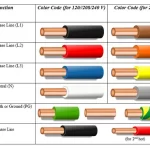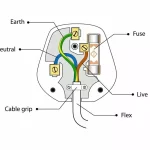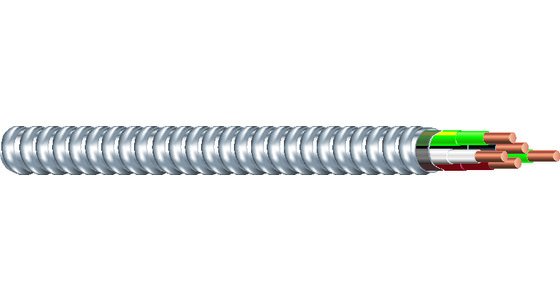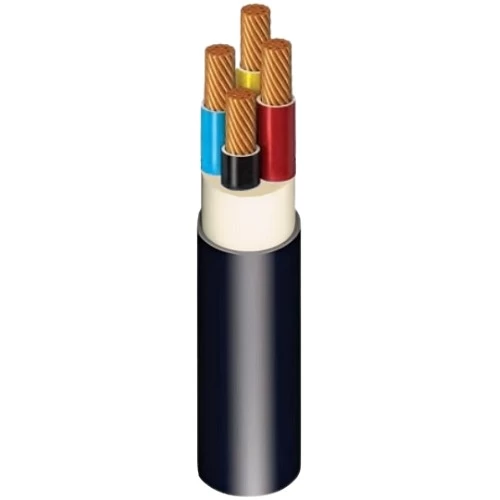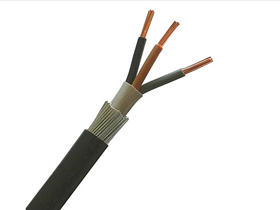Wire nuts are essential components in electrical work, used to securely join multiple wires together. However, not all wire nuts are created equal. The wire nut color code is more than just aesthetic—it indicates the size and capacity of the connector. Knowing which color to use can help ensure safe, reliable, and code-compliant electrical connections.
In this guide, we'll explain what each wire nut color means, how to select the right one, and why using the correct wire nut is critical for electrical safety.
What Is a Wire Nut?
A wire nut (also known as a twist-on wire connector) is a plastic cap with internal metal threads that twist wires together and hold them firmly. It insulates and secures the electrical connection, preventing arcing, short circuits, and potential fire hazards.
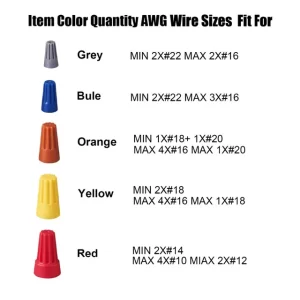
wire nut color code
Understanding the Wire Nut Color Code
The wire nut color code generally reflects the connector's size and the wire combinations it can accommodate. While manufacturers may have slight variations, most follow the industry standard color system.
Common Wire Nut Colors and Their Uses
| Color | Wire Range (AWG) | Max. Wire Capacity | Typical Use |
|---|---|---|---|
| Gray | 22–16 AWG | 2–4 wires | Small electronics, lighting |
| Blue | 22–14 AWG | 2–3 wires | Low-voltage applications |
| Orange | 18–12 AWG | 2–3 wires | Standard residential wiring |
| Yellow | 18–10 AWG | Up to 3–4 wires | Lighting circuits, outlets |
| Red | 18–8 AWG | 3–5 wires | Larger residential wiring |
| Tan | 22–8 AWG | Varies by brand | General-purpose (new standard) |
| Green | Grounding applications | Copper ground wires only | Ground connections |
| Blue (large) | 14–6 AWG | Up to 3 wires | Heavy-duty circuits |
🧰 Tip: Always check the wire nut packaging or manufacturer’s chart for exact specifications. Some brands like Ideal or 3M may rate their products slightly differently.
How to Choose the Right Wire Nut
-
Count the wires you need to connect.
-
Measure the wire gauge (AWG) of each wire.
-
Refer to the color code on the packaging or use a sizing guide.
-
Never force a wire nut onto too many or too thick wires—it can lead to a poor connection.
Safety Tips for Using Wire Nuts
-
Strip wires to the correct length (usually 1/2” to 5/8”) as recommended by the wire nut manufacturer.
-
Twist wires together clockwise before applying the wire nut for a tighter, more secure fit.
-
Tug-test the wires to ensure they’re firmly held.
-
Use UL-listed wire connectors and avoid mixing aluminum and copper wires unless rated for it.
Wire Nut Alternatives
While wire nuts are the most common solution in North America, alternatives include:
-
Push-in connectors (like Wago)
-
Crimp connectors
-
Screw terminals
Each has its own use cases and safety ratings.
Conclusion
Knowing the wire nut color code is essential for any safe and successful electrical wiring job. Whether you’re connecting a light fixture, outlet, or junction box, using the right color-coded wire nut ensures compatibility, safety, and peace of mind.



